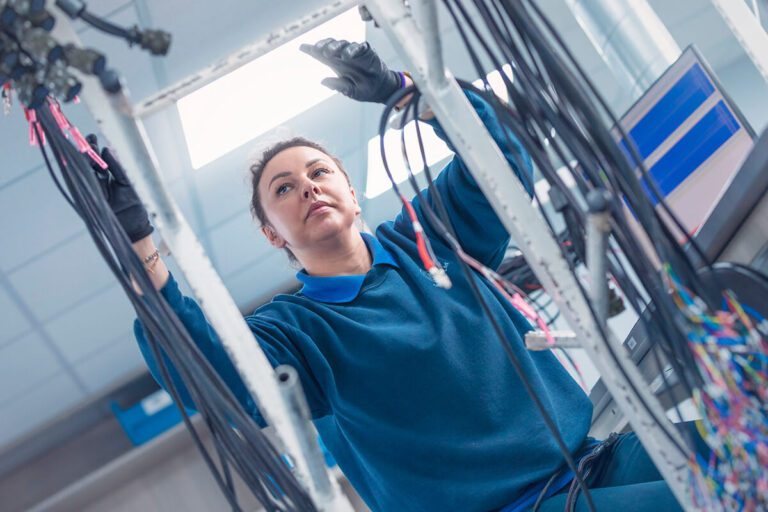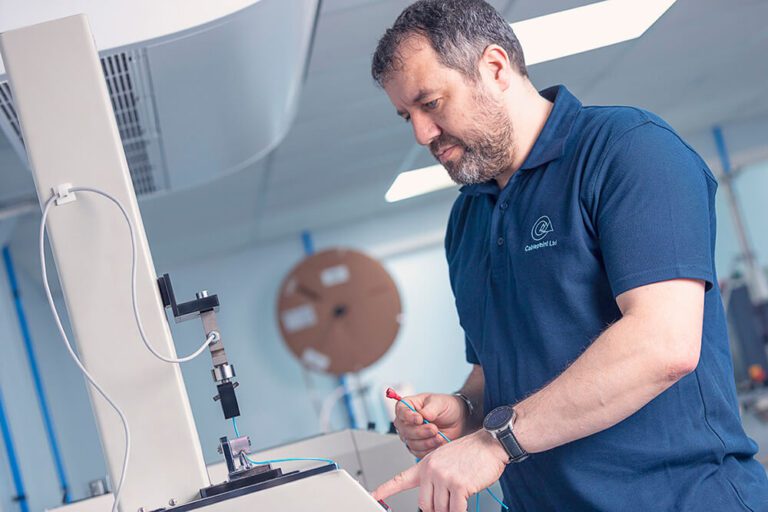Home » Cable Assembly » Choosing the Right Connector for Your Cable Assembly Project
In any cable assembly project, the choice of connector can make or break performance. Whether you’re developing medical equipment, military-grade harnesses, or industrial automation systems, selecting the right connector is critical to ensuring long – term reliability, efficient performance, and environmental resilience.
Cablepoint have helped hundreds of organisations specify and build connector and cable assemblies tailored to their application – this guide shares the fundamentals of connector selection.
Why Connectors Matter in Cable Assembly
A cable assembly is only as strong as its weakest connection. Choosing the right connector ensures:
- Consistent performance under electrical, mechanical, and environmental stress
- Signal integrity for data, video, or power transmission
- Reduced downtime caused by poor fits, corrosion, or physical fatigue
Every connector we use is matched carefully to your wire gauge, signal type, and environmental needs – right down to how often it will be plugged in and out.
Common Types of Connectors Used in Cable Assemblies
RF Connectors
Ideal for high – frequency transmission in telecoms and broadcasting, RF connectors such as SMA, BNC and F-Type ensure minimal signal loss and strong impedance matching.
Audio and Video Connectors
Connectors like HDMI, XLR, and RCA are key in AV setups. Shielding, durability, and compatibility across devices are the primary considerations here.
Power Connectors
Used across everything from medical devices to heavy – duty equipment, power connectors must be rated for the correct current, voltage, and safety standards. Barrel connectors, DC plugs, and terminal blocks are common examples.
Custom Connectors
For specialist industries like defence or healthcare, we source or manufacture bespoke connector solutions. This is particularly valuable when your device must meet strict environmental or functional requirements.
What to Consider When Selecting a Connector
- Application Environment
Is the assembly exposed to vibration, heat, moisture, or chemicals? We recommend overmoulded or sealed connectors for hostile environments. Our moulded cable service explains more.
- Electrical Requirements
Consider the voltage and current each connector needs to carry, along with impedance and EMI shielding requirements – especially for high – speed data.
- Mechanical Considerations
Will the connector need to be mated and unmated frequently? Will it be strain – relieved or supported? Cablepoint ensures that all assemblies factor in insertion force, locking mechanisms, and wear resistance.
- Form Factor
Connector size and orientation matter – especially where space is limited. From board – mounted micro connectors to robust circular industrial types, we can help identify the optimal fit.
- Compliance and Industry Standards
In sectors like medical, military, or automotive, connectors must meet rigorous industry standards (such as UL, ISO, or IPC620). We ensure all assemblies meet or exceed those benchmarks.
Connector Installation and Testing: Why It’s Crucial
Cablepoint install connectors using calibrated tooling and then tested under real-world conditions. Whether it’s force-tested on our SPC machines or visually inspected in our clean room, every assembly is verified before delivery.
Ongoing maintenance matters too. For high reliability builds, we recommend periodic inspection and cleaning, especially where connectors are exposed to wear or environmental exposure.
FAQs About Connectors in Cable Assemblies
Can I reuse connectors from a previous project?
Possibly, but we don’t recommend it unless the connector is undamaged, uncontaminated, and fits the new electrical and mechanical requirements.
Do I need gold-plated connectors?
Gold plating resists corrosion and improves signal integrity, especially in low – voltage or high – reliability environments. For critical applications – yes.
What happens if I choose the wrong connector?
You risk performance loss, physical wear, or even full system failure. That’s why our engineers are always available for specification support.
Get Expert Advice on Connectors and Cable Assembly Selection
Cablepoint engineer cabling solutions. Whether you’re prototyping a new medical device or scaling an industrial system, our team will guide you through connector selection, cable specification, and final assembly.
Need help with your project? Contact our team today or explore our full range of cable assembly services.





